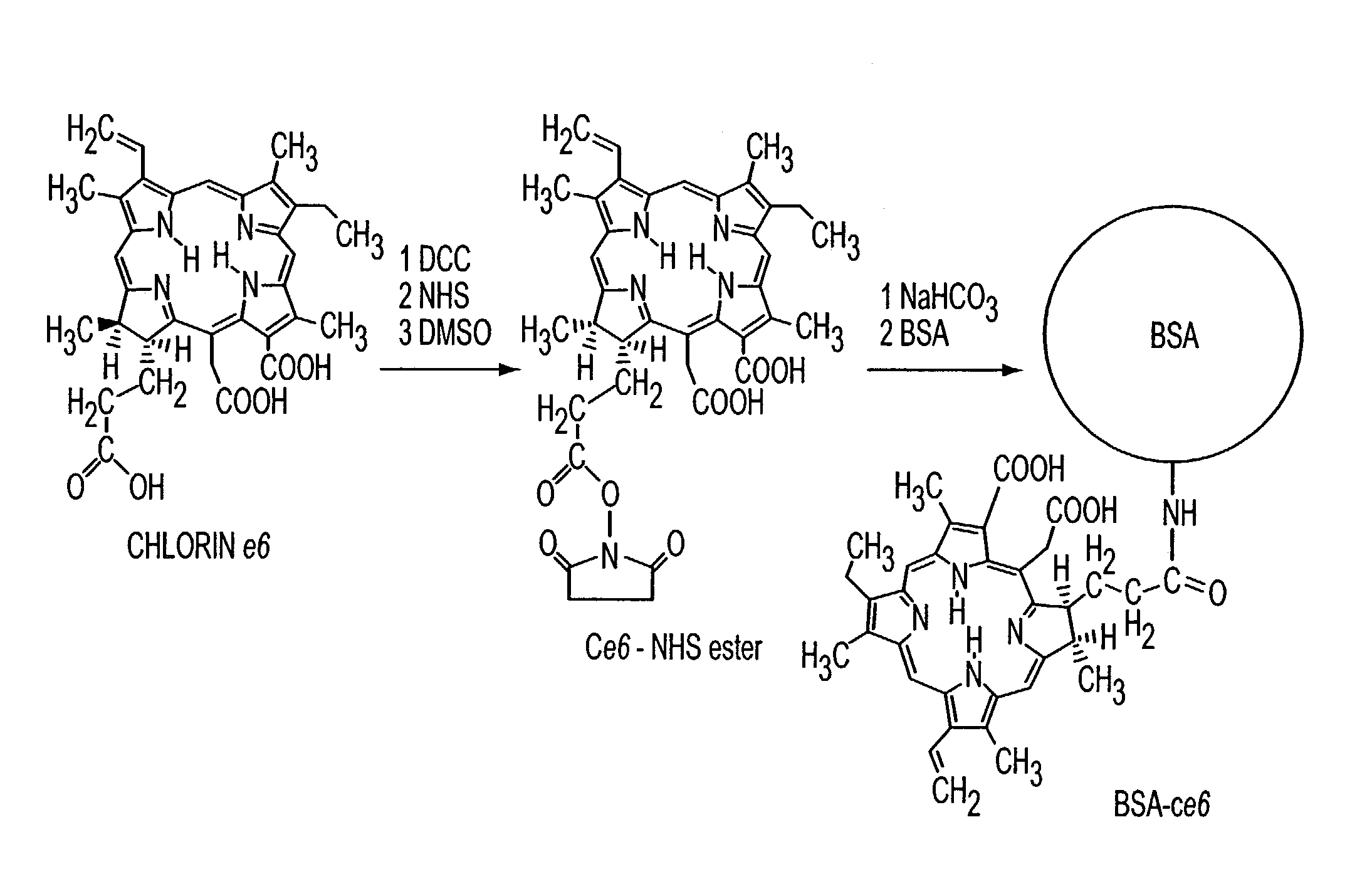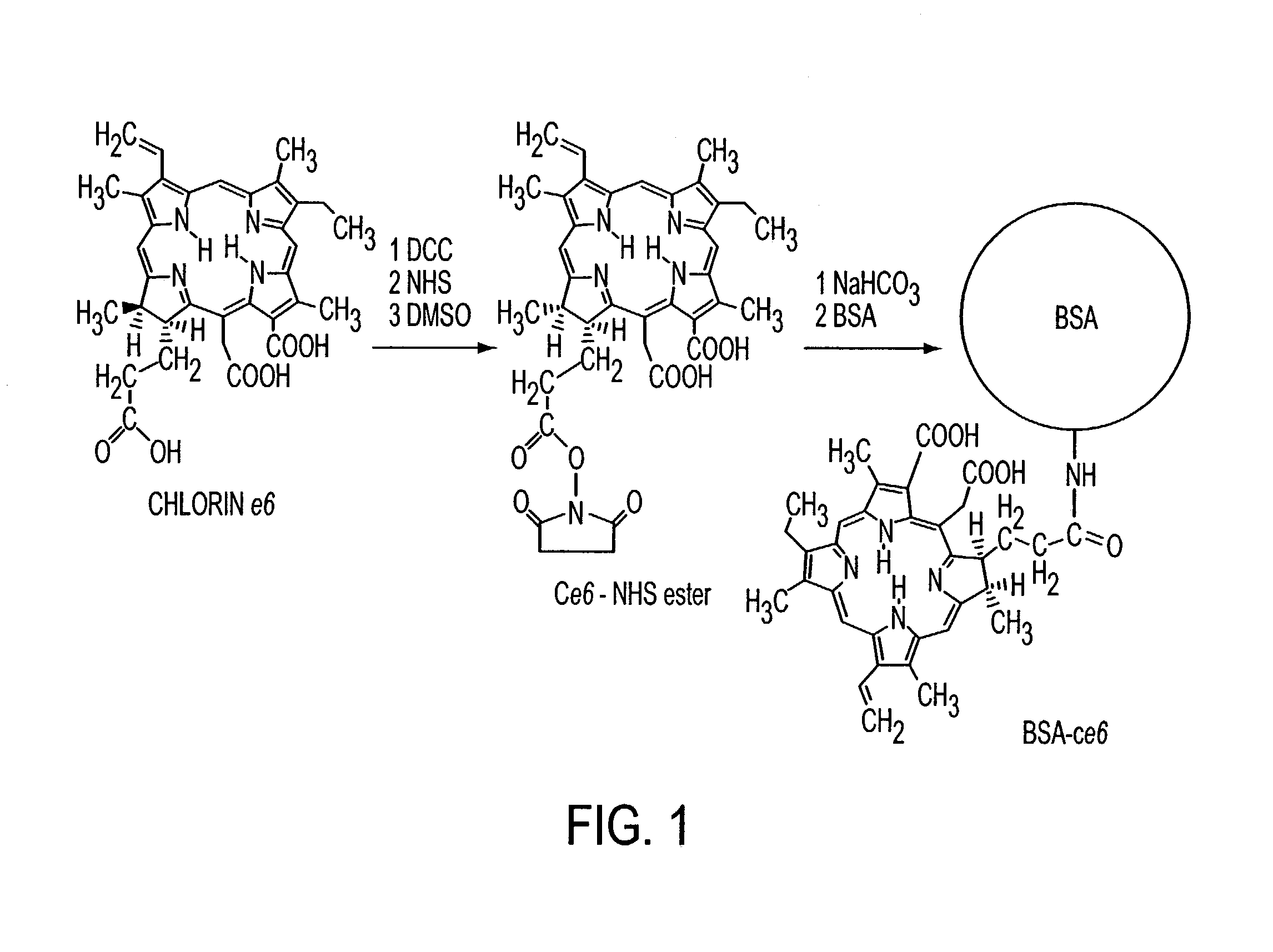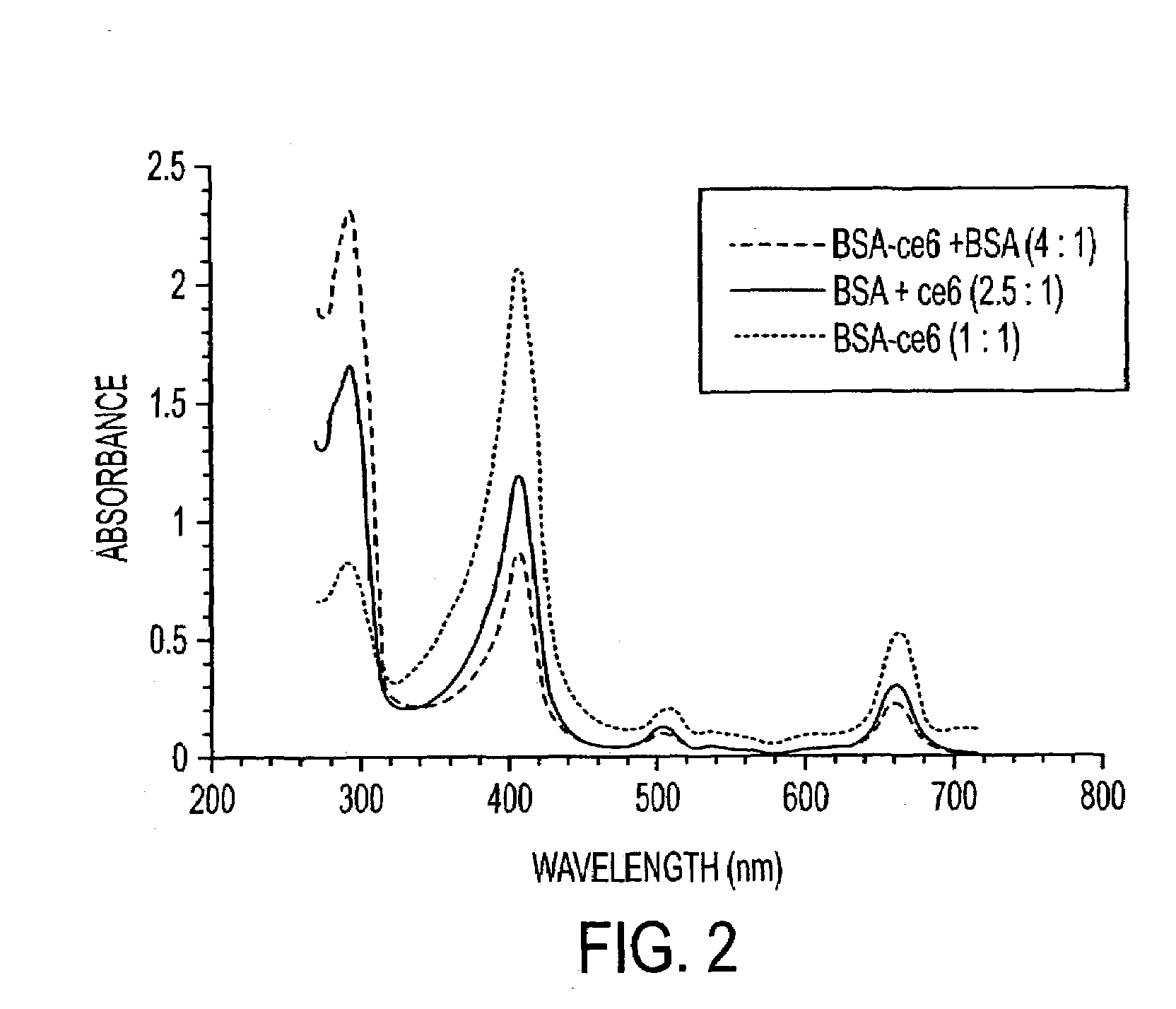Methods for tissue welding using laser-activated protein solders
a technology of laser activation and soldering, which is applied in the field of medical glues and adhesives, can solve the problems of inflammatory reactions, drawbacks of alternative tissue adhesives, and difficulty in healing and sealing tissue wounds
- Summary
- Abstract
- Description
- Claims
- Application Information
AI Technical Summary
Benefits of technology
Problems solved by technology
Method used
Image
Examples
example 1
Photodynamic Tissue Adhesion with Chlorine6 Protein Conjugates
[0130]This example demonstrates that the use of a chromophore, such as for example, chlorine6 (Ce6) may be effective in cross-linking proteins by a photodynamic mechanism. Covalent conjugates between Ce6 and proteins used as laser-activated solders form stronger tissue bonds than noncovalent mixtures. The finding that addition of sodium azide to the glue preparation reduces the leaking strength by more than 50% is attributed to quenching of singlet oxygen.
[0131]Preparation of Conjugates: Ce6 was obtained from Porphyrin Products (Logan, Utah), N-hydroxy succinimide (NHS), dicyclohexylcarbodiimide, bovine fibrinogen, bovine serum albumin (BSA), and gelatin were from Sigma (St. Louis, Mo.). Frozen, nonpreserved, human cadaveric eyes were obtained from the Illinois Eye Bank (Chicago). The reaction sequence used to attach the Ce6 molecules to the proteins covalently is shown in FIG. 1. All reactions were performed in the dark ...
example 2
Photodynamic Tissue Adhesion with Chlorine6 Protein Conjugates
[0142]The adhesive strength of covalent conjugates to non-covalent mixtures between chlorine6 and proteins in a laser activated soldering process are compared in this example.
[0143]The covalent and non-covalent mixtures of Ce6 photosensitizer contained different molar ratios of albumin, gelatin and fibrinogen. These photodynamic glues were applied to 5 mm incisions along the equatorial sclera and activated with an Argon blue-green laser over a two minutes period. Intra-ocular pressure was increased in 5 mmHg increments until fluid or air escaped from the wound.
[0144]The albumin-chlorine6 conjugate welds were significantly stronger than non-covalent mixtures. The albumin-Ce6 with added albumin provided the highest bursting pressures (mean=207.1 mmHg) in comparison to the other covalent conjugates (mean=88.8 mmHg) and non-covalent mixtures (mean=76.7 mmHg). The order of strength for the most effective photodynamic glues was...
example 3
Tissue Glue as a Slow Release Biomatrix
[0146]In this example, a dye containing protein glue mixture containing a phamacologically active amount of the appropriate growth factor will be formulated. Experiments will be conducted in vitro to test the extent of inactivation of the growth factor during the laser activation of the glue. It is expected that although some of the growth factor will be inactivated, enough will remain of the amount introduced to stimulate the tissue repair or wound healing.
[0147]Preliminary experiments in the rat cornea show that the laser activated glue remains in the incision for 48 hours, although much less than at time zero. This apparently fulfills the requirement of being a slow release vehicle with a defined rate of biodegradation.
PUM
| Property | Measurement | Unit |
|---|---|---|
| viscosity | aaaaa | aaaaa |
| temperature | aaaaa | aaaaa |
| temperature | aaaaa | aaaaa |
Abstract
Description
Claims
Application Information
 Login to View More
Login to View More - R&D
- Intellectual Property
- Life Sciences
- Materials
- Tech Scout
- Unparalleled Data Quality
- Higher Quality Content
- 60% Fewer Hallucinations
Browse by: Latest US Patents, China's latest patents, Technical Efficacy Thesaurus, Application Domain, Technology Topic, Popular Technical Reports.
© 2025 PatSnap. All rights reserved.Legal|Privacy policy|Modern Slavery Act Transparency Statement|Sitemap|About US| Contact US: help@patsnap.com



